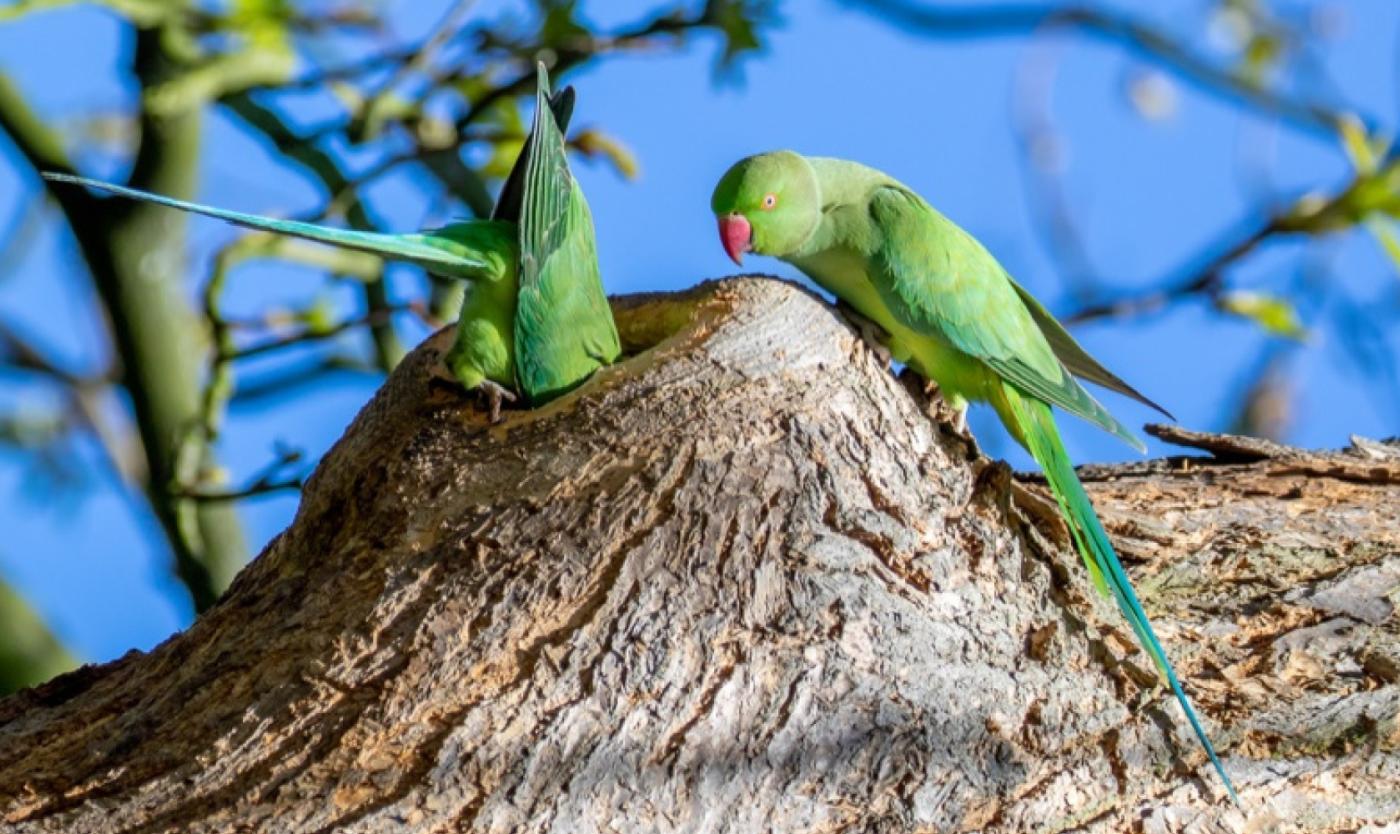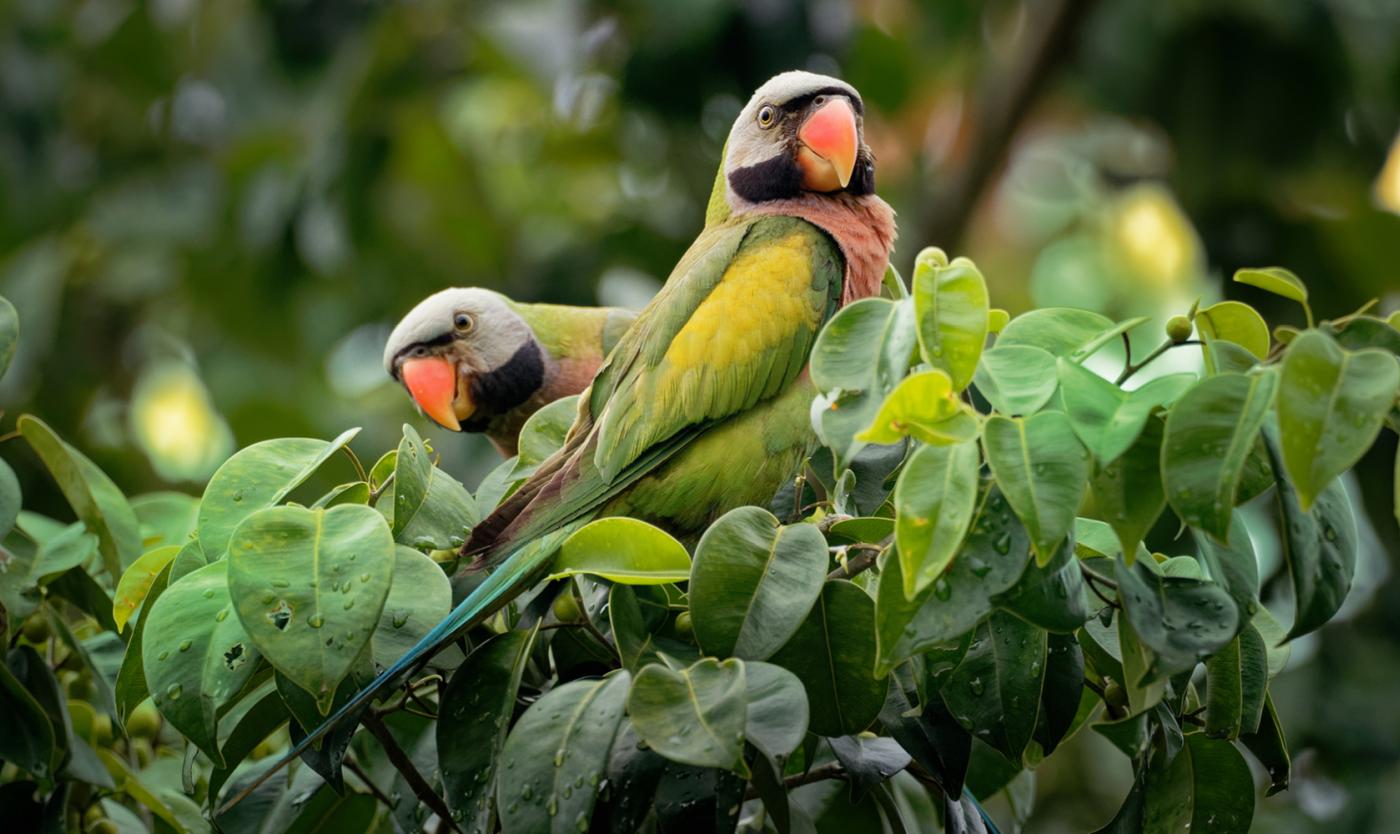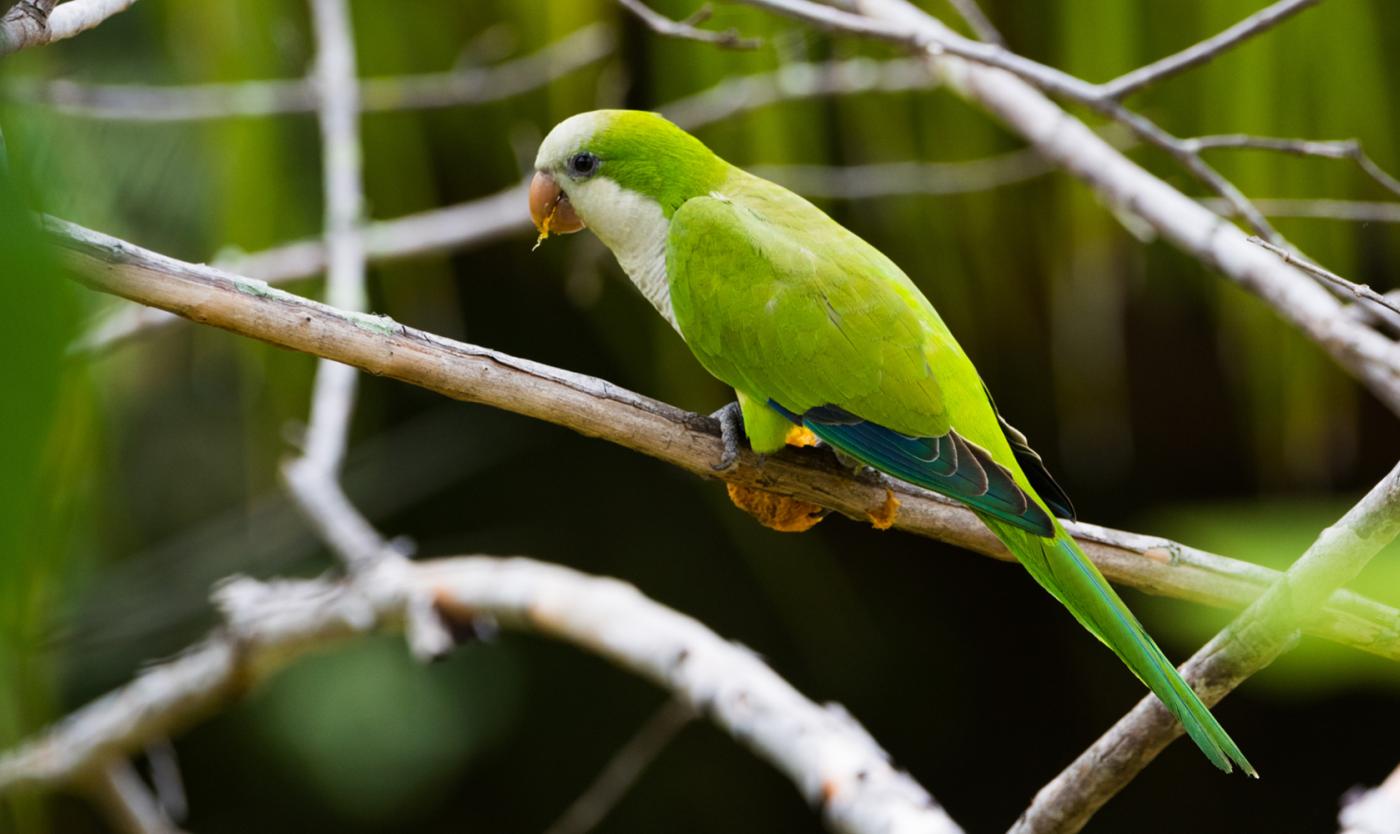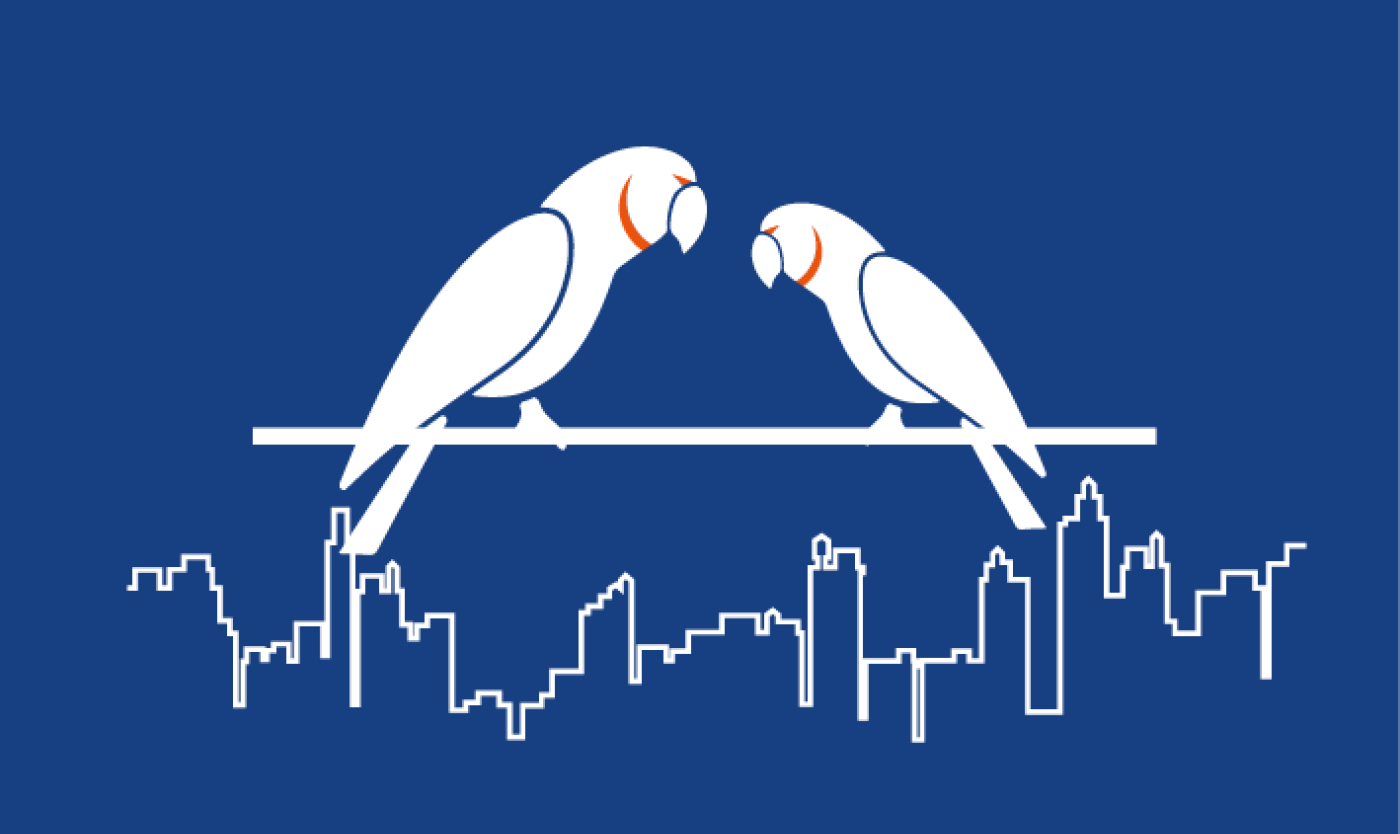An exotic invasion
It’s unclear whether they were released or whether they escaped. In the 1970s, several ring-necked parakeets (Psittacula krameri) from the former Meli zoo on the Heysel ended up in the wild. Before that, there were reports of the birds breeding in Tervuren. These few parakeets have meanwhile grown into a population of thousands of birds.

Ring-necked parakeet. Photo by Luca de Carli. Source: Waarnemingen.be.

Since 1998, the Alexandrine parakeet (Psittacula eupatria) has also been spotted in Brussels. It is related to the ring-necked parakeet and together, they often form a mixed flock. The Alexandrine parakeet occurs in several places across Europe, presumably after having escaped from captivity.
The third species found in Brussels is the South American monk parakeet (Myiopsitta monachus) which make very large, beautiful communal nests, many of which can be found in Forest Park. In the spring months, in the morning, you can often spot them feasting on daisy buds on the VUB Main Campus. This species is the least timid of the three.

Despite their exotic and cheerful sounding names, exotic animals are not always welcomed with open arms in Belgium. The ring-necked and Alexandrine parakeets, for example, nest in tree hollows and can displace indigenous species such as the wood nuthatch.
